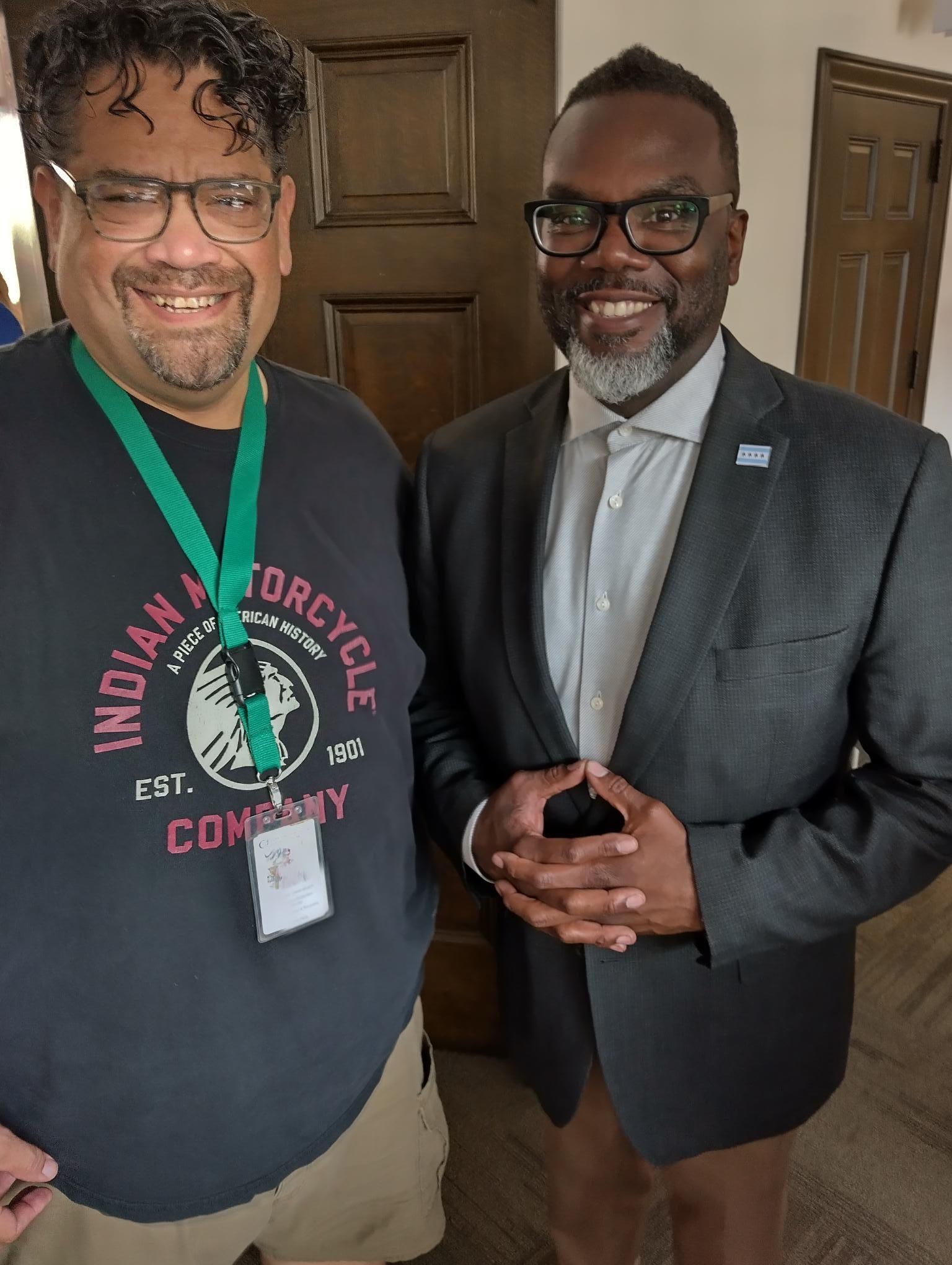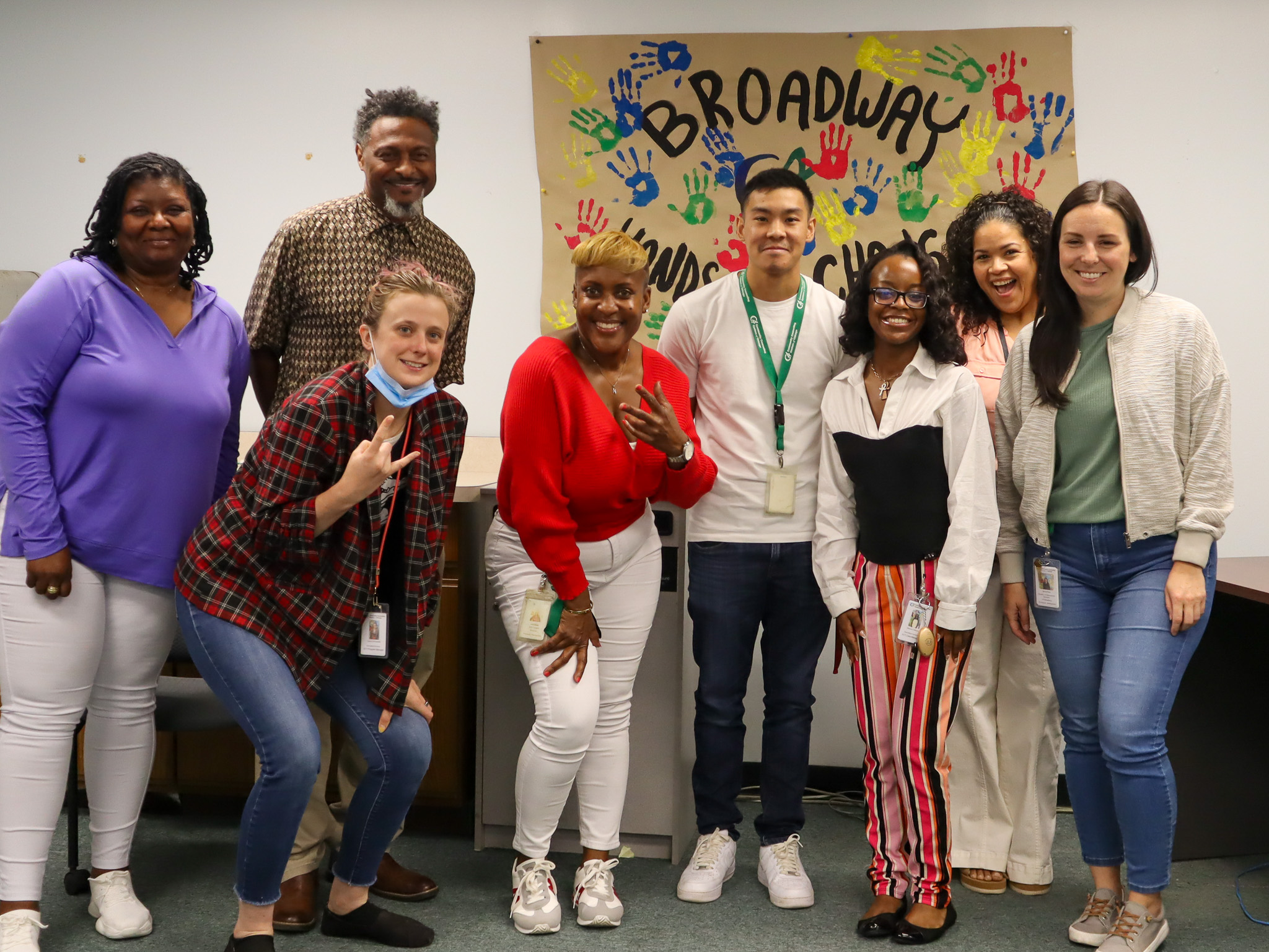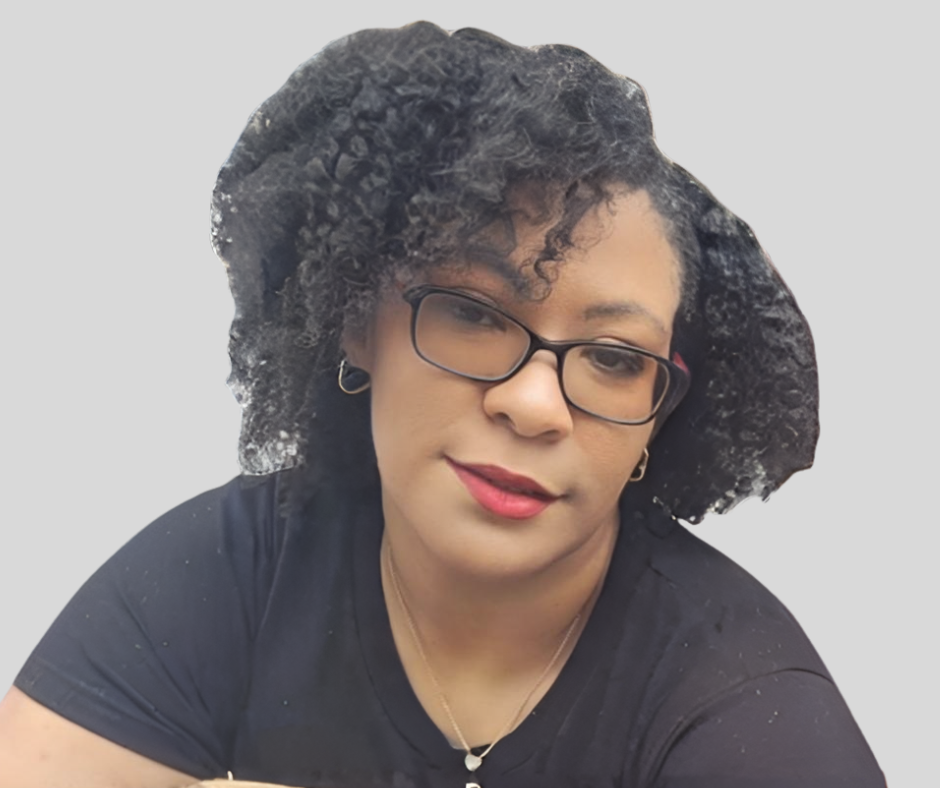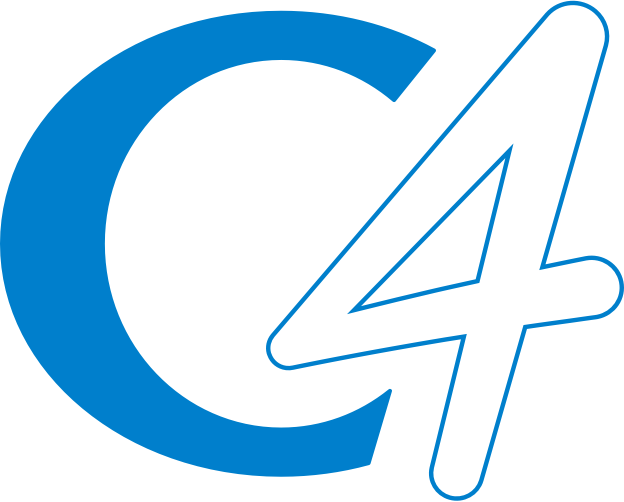Blog
Employee Spotlight: Crystal Swenson
We sat down with Youth Intervention Clinical Supervisor Crystal Swenson to talk about her work with youth from underserved neighborhoods and changing the narrative surrounding her program. Swenson grew up in California and moved to Chicago to earn her master’s degree in art therapy and counseling at the School of the Art Institute of Chicago. She enjoys hiking with her dogs, drawing comics, and dyeing her hair. This interview has been edited for length and clarity.
C4: Tell us a bit about yourself. Where are you from? What’s your life like outside of work?
Crystal Swenson: I’m originally from California, and I moved here in 2017 for grad school. I did grad school at School of the Art Institute [of Chicago], and I got a master’s in art therapy & counseling. My plan was just to do school and go back to California, because all my family’s in California, and I lived there my entire life before coming here. I wanted my license to be specifically for Art Therapy and Chicago offered that. I graduated right before the pandemic, in 2019. I got a job at a residential center, and then the pandemic hit. I learned a lot of things and that was wonderful, but it definitely prolonged my stay in Chicago. I work at a private practice with mostly adolescents doing art therapy there, and then I found this job at C4.
C4: How long have you been at C4, and what positions have you held here?
CS: I’ve been here less than a year. This is my first position I’ve held at C4, but I’d worked with C4 in the past when I was working in a residential setting, because we interacted with SASS a lot. So I got to know some of the supervisors and admin before even starting here.
C4: And what does a typical day look like for you in this role?
CS: My day-to-day schedule is a lot of meetings, especially with supervisees. I put a lot of focus on supporting clinicians and helping them find opportunities to meet their individual goals and supporting ideas for moving forward in relational and curious ways in community-based settings.
I do see a couple clients, and I’m lucky to be able to still see clients at C4. But in terms of the position, a lot of the work we do is work that C4’s already been doing in supporting communities that are underserved and under resourced. I’m glad to have this branch of it where we can go into other neighborhoods on the west side and south side of Chicago and support them. I think the most important part of this role is helping build partnerships with community members. A lot of our partners who were also awarded the Reimagine Public Safety Grant don’t necessarily have all the mental health resources we do, and that’s where we step in and offer groups or individual support, or even events. Part of what I want to grow into in this role is someone who’s navigating and coordinating more events and helping build understanding of what we do in the HRYIS program, and how that can benefit or fit into some programming, whether it be in community settings like boys and girls clubs, or at Salvation Army or something, and how we can work alongside them to support the communities around us. What’s specific about High Risk [Youth Intervention Services] is that Pritzker provided money to further support multiple programs to do the work we’ve all already been doing, but we now have additional funds allocated and resources to do it. Now we’re all connected, too. We had meetings over the summer – we work alongside Children’s Home & Aid, Metropolitan Family Services, and Mount Sinai, so we all have our separate areas and communities we work in. We do work alongside other organizations and community youth development programs, and we get to work in areas outside of the CPS schools we already work with to provide additional support in various community settings.
C4: Is there an experience you had with a client or another C4 staff member that helped you grow or changed your perspective?
CS: When I first started, I was the only member of the team hired, so a I did lot of the intakes at the very beginning. This kiddo was one of the ones I started with at the beginning of my job. He’s very sweet, and a very smart kiddo, and our goals and areas of growth were learning how to interact with other people, and how to perspective-take. Very simple, working on emotional regulation, anger management, how to effectively state their needs, that sort of thing. Over the summer, a close family friend of theirs was killed due to gun violence, and it was really devastating. Seeing that complete switch in a kiddo who was very young and watching them navigate that grief alongside their family was something that kind of shook me. I’m used to working with kiddos that have trauma histories, but being part of the moment where that sort of thing is happening definitely pushed me to be more compassionate in ways that were personalized to him. I was lucky to already have that rapport and relationship with him, and seeing how he navigated that and processed that grief made me realize I don’t have all the answers. I just had to be in that sadness with him, and that experience was humbling, and sharing that space with him warrants a thank you for being so vulnerable with me. I’m still working with him in a school setting, and we still work on it. Seeing how he handles that in different ways is very unique and very special to witness.
C4: Is there anything you want people outside your sector to know about the work you do or any misconceptions you’d like to clear up?
CS: One thing I’ve talked with folks about is how we communicate about our program. The title of our program begins with “High Risk Youth.” But I feel like that understanding is incomplete – we also try to help youth, families, and communities that are affected by it; kiddos who have lost someone to gun violence or have a family member involved and want to find another way to live their life. The term “at-risk” is used to address this population, and I believe that there is stigmatization and bias that comes with that title, in addition to the damaging effects this can have on labeling others. I’m not sure switching to an additional “label” would be the most constructive, but we could become more specific with what the kiddo may be “at risk” of. For example, similar to the ADA approach of identifying the client as a human first and the diagnosis second, instead of “at risk youth,” we can say, “youth who is more likely to experience gun and gang violence in their communities.” By using specific terminology in relation to the client, we may be able to minimize stigmatization and automatic bias. A huge part of it is collaborating with kiddos and families on all the options and making sure that they see that they can request and access these resources. I think there’s this idea that we’ll talk to these kids, get them all jobs, provide programs, services, and other resources, and they’ll be fine. But there’s also the reality of the situation, and it’s about understanding that each case – each kiddo – is unique and determining what support they need or want. And they may not need all the resources we can offer, but meeting them where they’re at is the biggest thing we try to do, and not just go down a list of checkboxes. We like to address each case holistically.



